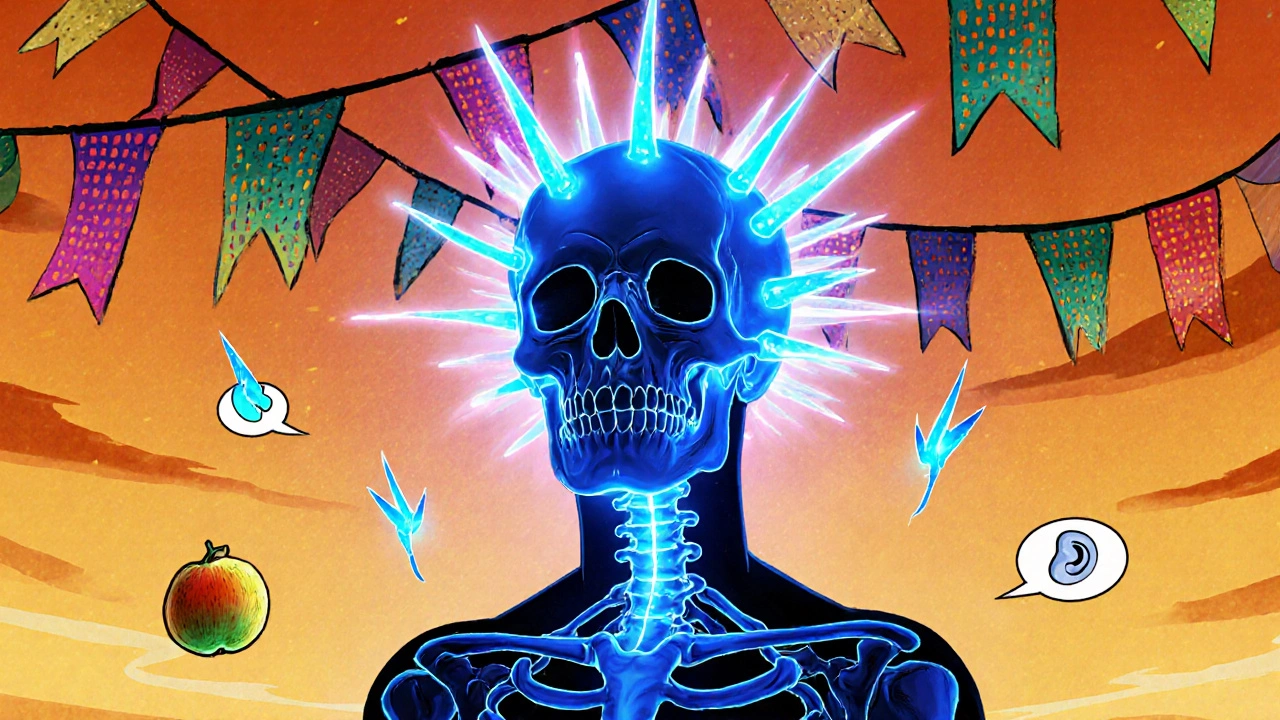Trigeminal Neuralgia Alternatives: Natural and Drug-Free Options That Work
When trigeminal neuralgia, a chronic pain condition affecting the trigeminal nerve that carries sensation from your face to your brain. Also known as tic douloureux, it causes sudden, severe electric-shock-like pain in the jaw, cheek, or forehead. Most people start with medications like carbamazepine or gabapentin, but side effects, tolerance, or lack of relief often push them to seek trigeminal neuralgia alternatives. The good news? There are real, research-backed options beyond pills — and many people find lasting relief without surgery or long-term drug use.
One major category of alternatives involves nerve pain relief, a broad term covering non-pharmaceutical methods that calm overactive nerves. Techniques like acupuncture, physical therapy focused on the jaw and neck, and transcutaneous electrical nerve stimulation (TENS) have shown promise in small studies and patient reports. For example, a 2021 review in the Journal of Headache and Pain found that acupuncture reduced pain intensity in over 60% of trigeminal neuralgia patients who didn’t respond well to drugs. Similarly, gentle jaw stretches and posture correction — often overlooked — can ease pressure on the nerve, especially if tension from clenching or grinding teeth is part of the problem.
Another key area is natural remedies for facial pain, plant-based or supplement-based approaches that target inflammation and nerve function. Vitamin B12 deficiency is linked to nerve damage, and some patients report fewer flare-ups after supplementing with methylcobalamin. Magnesium, known to calm overactive nerves, may also help — especially when taken in glycinate form. Topical capsaicin cream, made from chili peppers, can desensitize nerve endings over time. And while turmeric gets attention for its anti-inflammatory effects, combining it with black pepper (to boost absorption) might be worth trying, just like in other nerve pain conditions.
Then there’s the mind-body side. Stress doesn’t cause trigeminal neuralgia, but it makes attacks worse. Practices like mindfulness meditation, yoga, and biofeedback have helped people reduce both frequency and severity. One patient shared that after six months of daily breathing exercises, her daily pain episodes dropped from 15 to 2. It’s not magic — it’s training the nervous system to stop overreacting.
What’s missing from most doctor’s offices? Personalization. Trigeminal neuralgia isn’t one condition — it’s a cluster of triggers: dental work, cold wind, chewing, even brushing teeth. The best alternatives are the ones you tailor to your own triggers. Maybe it’s switching to a soft-bristle toothbrush. Maybe it’s avoiding cold drinks. Maybe it’s wearing a scarf in winter. These small changes add up.
Below, you’ll find real patient stories, science-backed non-drug strategies, and comparisons of approaches that actually work — not just what’s marketed online. No fluff. No hype. Just what people have tried, what helped, and what didn’t.
- Archer Pennington
- 13
Baclofen for Glossopharyngeal Neuralgia: What You Need to Know
Baclofen may help reduce severe throat pain from glossopharyngeal neuralgia when standard drugs fail. Learn how it works, dosing tips, side effects, and real patient outcomes.
Read more
